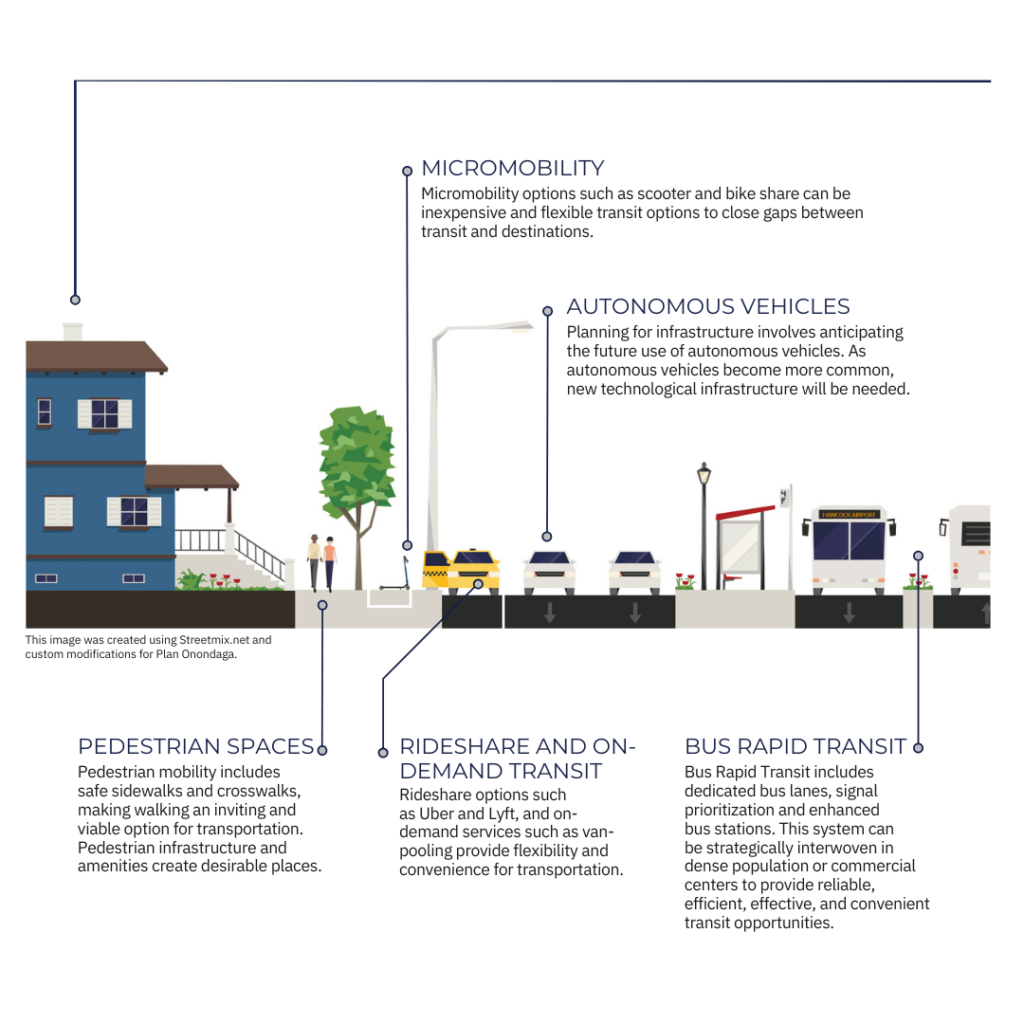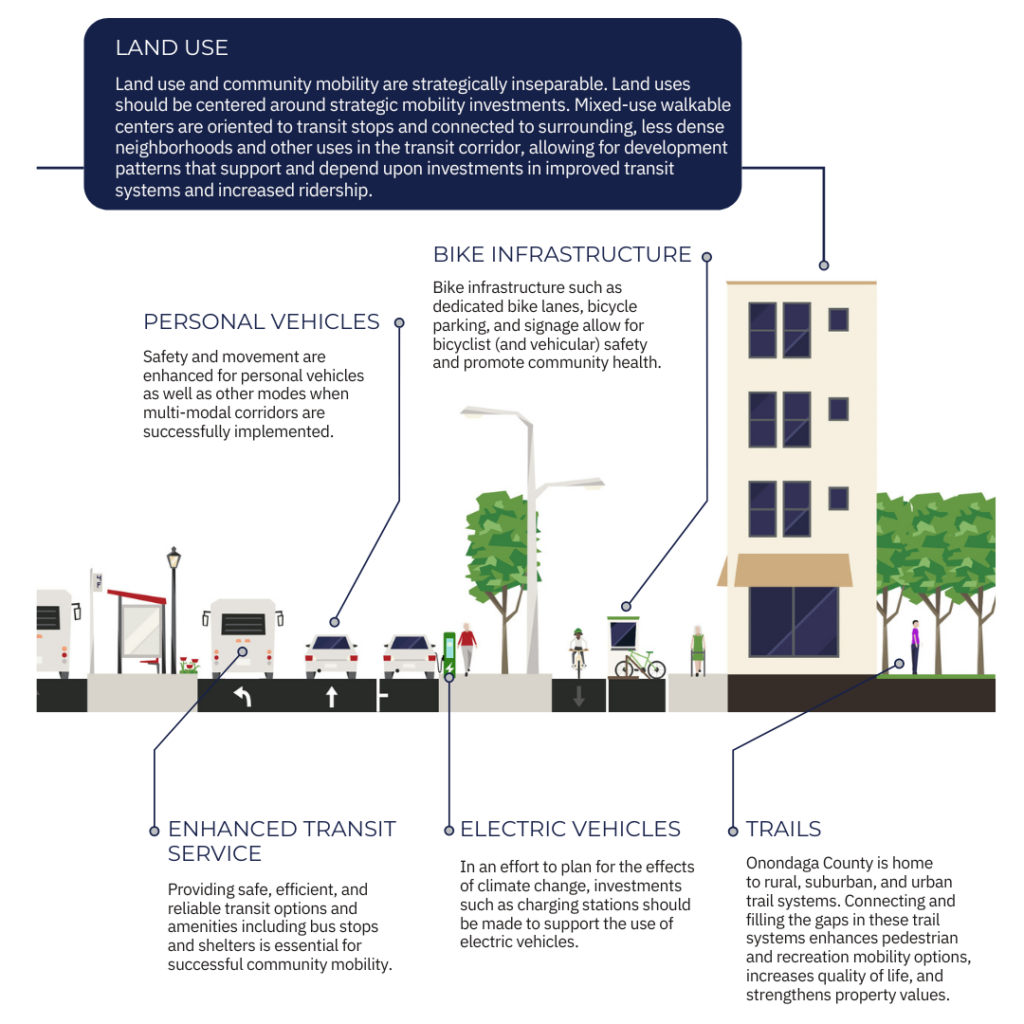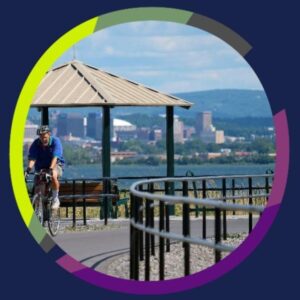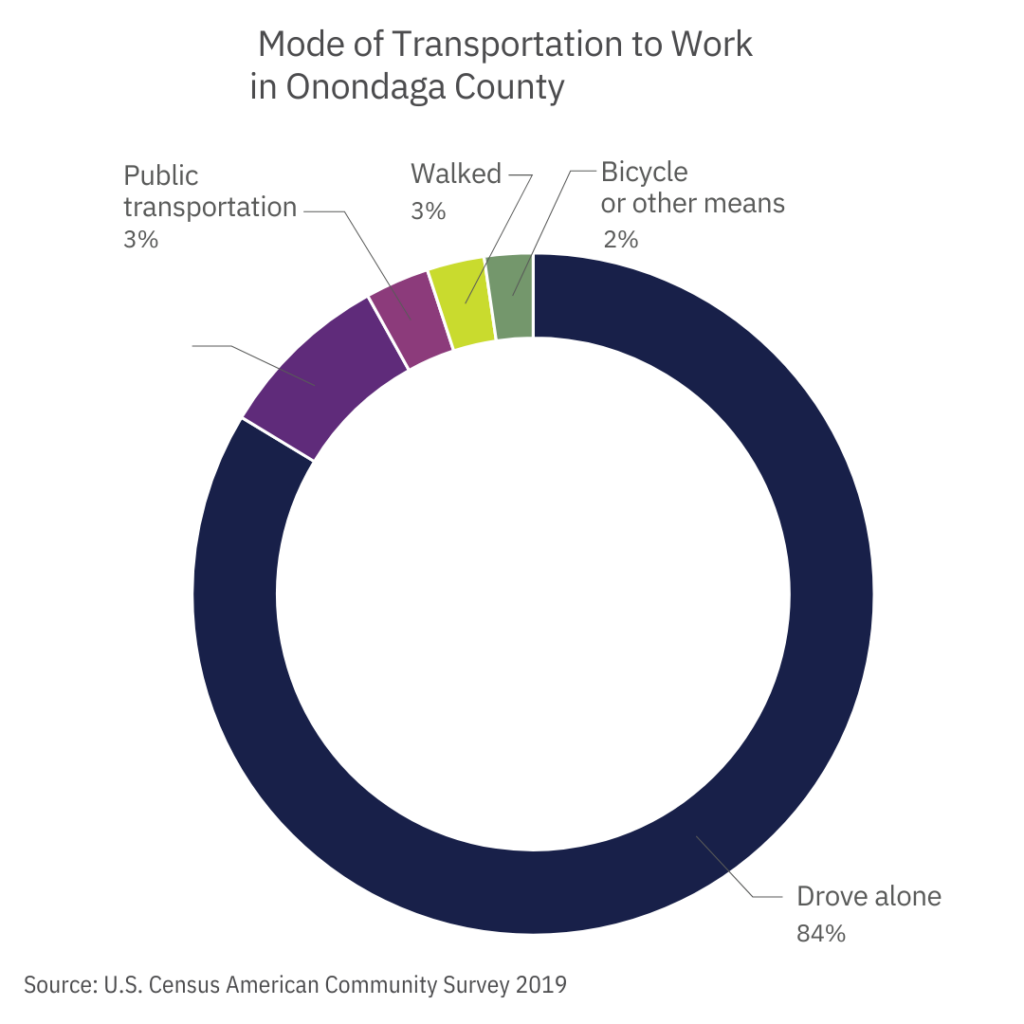Community Mobility is the ability of people to travel from place to place within Onondaga County. Community mobility strategies aim to provide for more choice in the transportation system and to improve safety for all users.
Vision
Onondaga County will enhance mobility by improving the safety, accessibility, and diversity of options for moving people within and between communities.
Components of Community Mobility
Community mobility is often best understood at the scale of an individual street. A well-designed street offers safe and accessible options for people of all ages and abilities to move in various ways, enhancing both mobility and safety. Streets that support multiple modes of transportation—like the one shown below—are known as “complete streets.” These streets include infrastructure that safely accommodates vehicles, buses, bicycles, and pedestrians, while also connecting transit systems, road networks, bike paths, regional trails, neighborhoods, and communities.



Community Mobility in Onondaga County
Within Onondaga County, there are multiple initiatives that have been working to modernize our mobility infrastructure. The success of these initiatives will require consistent focus and collaboration across the County involving local municipalities, state, County, and federal agencies. Strengthening mobility systems requires a focus on pedestrian, bicycle, and transit infrastructure in response to lifestyle changes and community needs.

Goals and Strategies
Community Mobility is an important component of maintaining the quality of life and economic competitiveness of Onondaga County. There are multiple factors that can contribute to the modernization and development of the County’s mobility system.
Goal 1
Become a Vision Zero Community
Initiatives like Vision Zero and Complete Streets can help Onondaga County and its communities reduce serious injuries and fatalities within the transportation system. Expanding transportation options and promoting active modes of travel also support better public health and enhance quality of life.
Adopt the Vision Zero framework to guide investments in the transportation system.
Implement the Complete Street projects on County and local roads to expand mobility options and improve safety for all road users.
Goal 2
Invest in Transit Corridors
Recent innovations in transit technology have made bus systems more reliable and encouraged increased ridership. Implementing bus prioritization tools and improving service frequency and reliability on key routes can further boost transit use in the County. Enhanced transit service also strengthens connections between the workforce and employers, supporting economic development. To maximize impact, transit improvements should be coordinated with local land use planning to promote higher residential densities along transit corridors.
Implement a countywide bus rapid transit system.
Enhance transit with new technologies.
Explore fareless transit options.
Coordinate with local municipalities to plan corridors to support TOD and provide model zoning for updating zoning along transit routes.
Expand micromobility options along transit corridors to connect transit service with adjacent neighborhood areas.
Goal 3
Implement an Expanded and Connected Network of Bike Lanes, Trails, and Multi-Modal Corridors
There are multiple planning level projects that have been completed within the County to improve pedestrian and bicycle network connectivity. Continued investment in extending the connectivity of these systems and connecting them to designated centers will further strengthen the County’s mobility system.
Complete the Loop the Lake and Onondaga Creekwalk trail systems.
Invest in pedestrian priority zones and develop an interconnected sidewalk network throughout the County.
Invest in an expanded and interconnected system of bicycle corridors with dedicated bicycle infrastructure.
Invest in additional connectivity to the Empire State Trail.
Goal 4
Prepare for Our Transportation Future
As the market for electric vehicles expands, so does the demand for charging infrastructure. Meanwhile, autonomous vehicles are on the horizon and will likely necessitate updates to local land use regulations, street design, and technology systems. Proactive investment in infrastructure, planning, and regulatory updates will help communities adapt to and guide these emerging transportation trends.
Invest in electric vehicle charging infrastructure at County-owned facilities and public venues.
Provide support to local jurisdictions to develop and implement local regulations for guiding investments in electric vehicle charging infrastructure on private property including in residential and commercial locations.
Provide support to local jurisdictions in preparing for autonomous vehicle infrastructure and corresponding land use needs.

